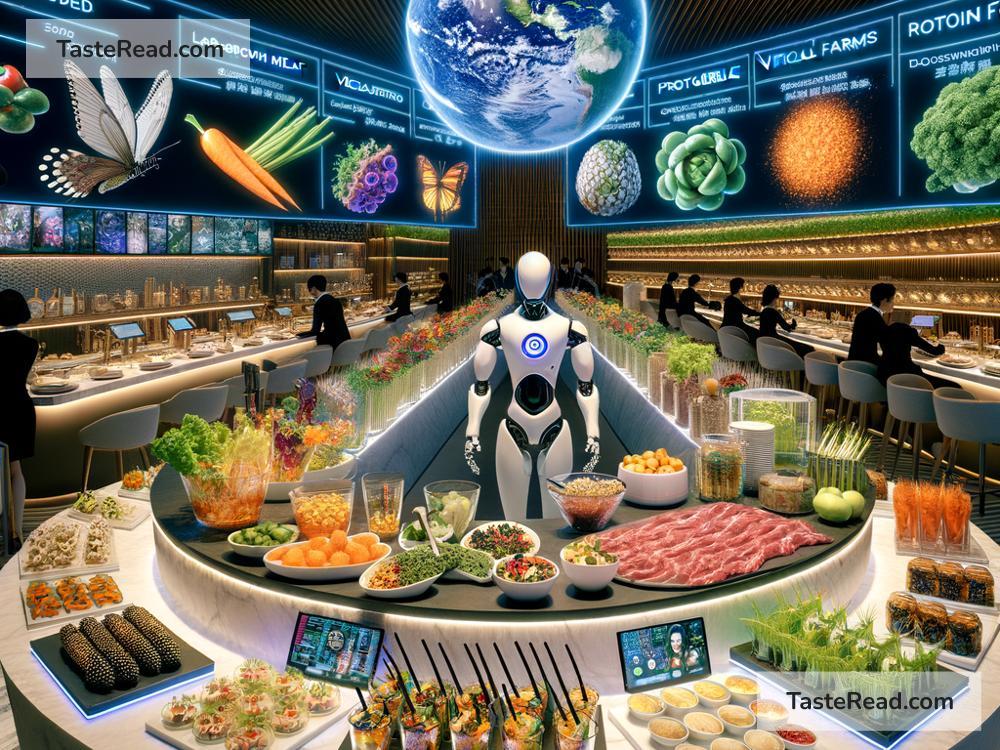The Future of Food: A Global Effort to Innovate Together
Food is essential for life. It nourishes us, gives us energy, and brings people together. But as the world changes, so does our relationship with food. Challenges like climate change, population growth, and resource scarcity have sparked important conversations about the future of food. How will we feed 10 billion people by 2050? How can we make farming more sustainable? And how do we ensure everyone has access to healthy and affordable food? The answers lie in one powerful idea: collaborative global innovation.
The Challenges Facing Food Today
Before looking ahead, we need to understand the hurdles that stand in the way of progress. Our global food system is under pressure. Here’s why:
-
Climate Change: Rising temperatures, unpredictable weather, and environmental disasters are making it harder to produce food. Crops might fail due to droughts or floods, and pests are spreading to new regions. Farmers everywhere are struggling to adapt.
-
Population Growth: By 2050, the global population is expected to reach nearly 10 billion. That means we’ll need to produce much more food, but we don’t have unlimited resources like land, water, and energy to do it.
-
Waste: Surprisingly, about one-third of all food produced globally is wasted. This happens everywhere—from farms where crops are thrown away to households where leftovers go uneaten. Wasting food also wastes the resources used to grow it.
-
Nutrition Gaps: Millions of people lack access to nutritious food, leading to problems like malnutrition and obesity. The issue isn’t just about producing enough food—it’s about making sure people eat the right kind of food for a healthy life.
How Collaboration Can Lead to Solutions
The future of food isn’t just about inventing new technologies. It’s also about working together. Farmers, scientists, governments, businesses, and everyday consumers all play a role in building a better food system. Here are some ways that global collaboration can drive innovation.
1. Sharing Knowledge Across Borders
Agriculture looks different around the world. A farmer in Kenya might grow crops in dry, hot conditions, while a rice farmer in Thailand depends on flooded fields. When farmers and scientists share knowledge globally, they can help each other solve problems. For example, drought-resistant seeds developed in one country could help farmers in another region grow crops even with limited water.
Organizations like the United Nations and research institutions work to connect experts from around the world. Together, they’re creating a shared pool of ideas that can be used everywhere.
2. Using Technology Together
Technology is transforming agriculture. Farmers are using drones to monitor their fields, sensors to analyze soil health, and robots to plant or harvest crops. But these tools can be expensive and hard to access, especially for farmers in low-income countries.
One solution is to develop open-source methods—technology that anyone can use, improve, and share. Partnerships between countries and companies can also ensure that technological advancements reach farmers worldwide, not just the wealthiest ones.
For example, scientists are inventing lab-grown meat, plant-based alternatives, and precision farming techniques that require fewer resources. These innovations can improve how we grow food while lowering environmental impact.
3. Combating Waste Together
Food waste is a global problem that requires a global solution. Some countries are taking steps to reduce waste and share their ideas with others. For example, businesses in Europe have started “ugly food” campaigns to sell fruits and vegetables that look imperfect but are perfectly safe to eat. Meanwhile, apps in countries like India connect restaurants with food surplus to charities that distribute meals.
With better organization and cooperation, global systems can be put in place to reduce waste. This saves resources and ensures more food gets to hungry people.
4. Engaging Communities Everywhere
Change doesn’t just happen from the top down—it often starts at the grassroots level. Small, local initiatives can have a big impact when communities share their success stories. For example, urban farming is gaining popularity. People in cities are growing food on rooftops, in empty lots, or even indoors using vertical gardens. These projects can inspire similar efforts worldwide.
Meanwhile, education plays a key role. Schools, governments, and non-profits can teach people how to eat sustainably, reduce waste, and support ethical food systems. When people work together locally, they contribute to global progress.
A Better Food Future for Everyone
The future of food is not something we can tackle alone. It requires collaboration between countries, industries, and communities. By sharing knowledge, technology, and ideas, we can overcome the challenges ahead. Together, we can produce food in a way that’s sustainable for the planet and fair for people.
Imagining the food system of tomorrow is exciting. Picture lab-grown burgers that taste just like the real thing, vertical farms in skyscrapers feeding city populations, and apps that ensure every family has access to nutritious meals. These ideas aren’t science fiction—they’re real innovations being worked on today.
But the most important ingredient in this future is cooperation. When we join forces, we unlock the potential to solve big problems like hunger, climate change, and waste. A better food future isn’t out of reach—it’s within our grasp, as long as we work together.
By embracing collaborative global innovation, we can rewrite the story of food. We can move toward a world where no one goes hungry, where farming protects the environment, and where every meal is a step toward a healthier planet. The future of food starts now, and it’s a shared journey we can all be part of.


